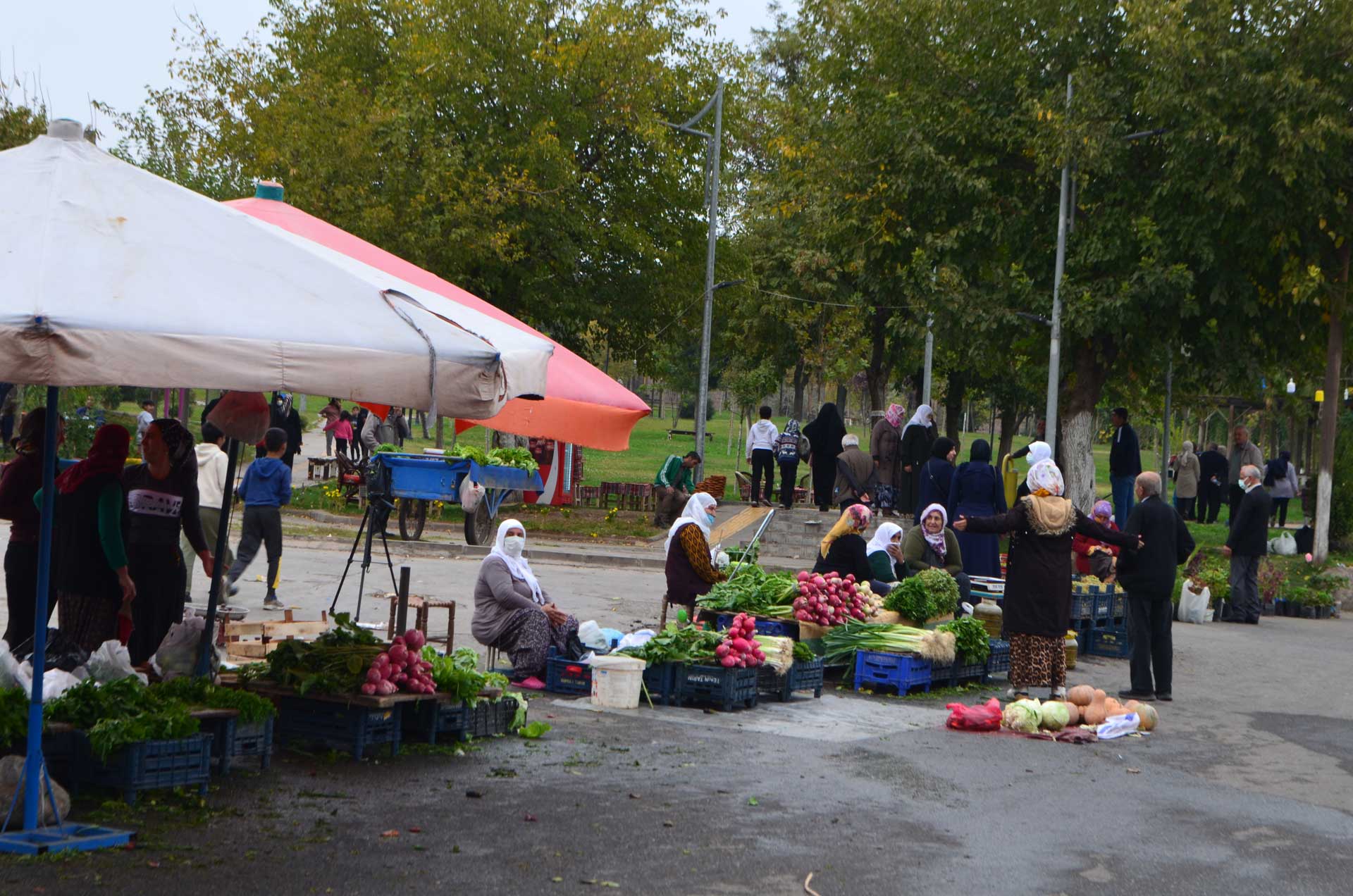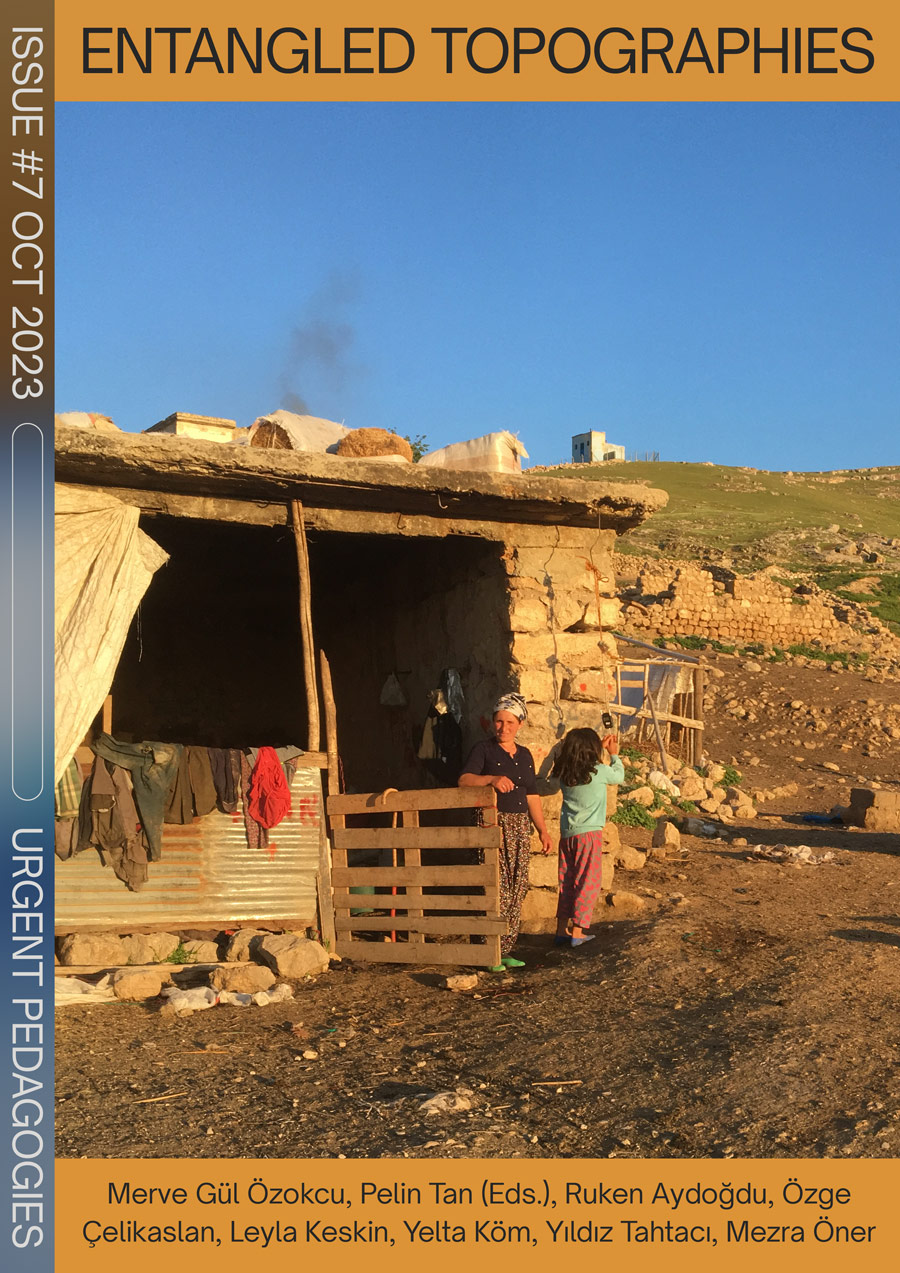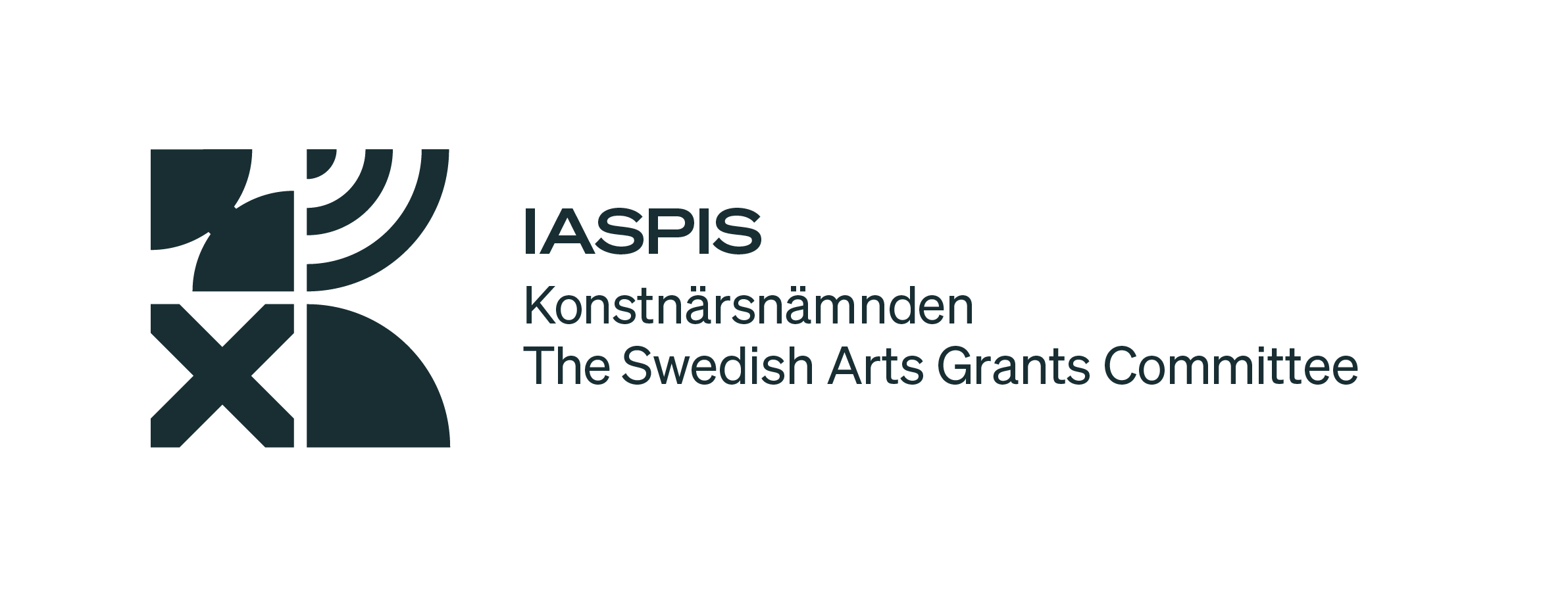Eco-Healers / The Women of Hevsel
Ruken Aydoğdu
CATEGORY
In this architectural anthropological field research and engagement, through a critical ecofeminist approach, we will read about resisting, dispossessed and precar women of Hevsel Gardens.
For centuries, women have produced knowledge and experience in a variety of ways. However, the man-centred understanding of science has trivialised women’s experiences within the main narratives.

The market established by the women field owners of Hevsel at the entrance of the Mardin Kapı Cemetery. Photo: Ruken Aydoğdu
– I have crossed paths with the women workers of the Hevsel Gardens.
I saw these women as I was walking across the Suriçi district of Diyarbakır. Two women sitting on the ground… plastic bags laid in front of them… plastic bags full of sweet fragrant herbs…
– What are these fragrant herbs? Mint? Pennyroyal?
One of the women turned toward me to answer my question. As she turned, I noticed something on her back. Two loops stitched with white thread on her maroon waistcoat…
She must have tried to stitch the tear on the back of her jacket. Who knows, perhaps it was the load on her back she had tried to stitch…
– What was it that compelled me so? Something like a flash, even though I had passed through the same spot countless times before… Who were these women?
– A voice: The Women of Hevsel! Mother Earths!
Mother Earths, yet city-dwelling women who came to the Hevsel Gardens in the early hours of the morning and spent the whole day in the fields with their families; women who raised their children in the fields and lived in the neighbourhoods surrounding the city wall. Women of all ages and backgrounds, some working their own ploughs, others seasonal or temporary workers, local or refugee, tradeswomen added up among these women who worked as agricultural labourers and earned a living from selling whatever they picked from the gardens in the historical intramural neighbourhoods of Diyarbakır. Refugee women who had migrated from villages to the city, away from the Syrian war, speaking different languages, possessing different cultural backgrounds, dwellers of the impoverished neighbourhoods, casual women workers, Mother Earths!
The city of Diyarbakır, which for years has continuously appeared on the agenda as part of a region associated with violence, therefore sticking in the public’s mind as such, actually teaches us new social data through the variety of user identities and storylines that have evolved as a result of the war and of the forms of resistance that have surfaced in its aftermath. The invisible forms of resistance that exist in this area where life is connected with nature, within a city known only for being part of a violence-torn region, are proof of the crucial necessity of reexamining the notion of resilience with the help of these women actors. The struggle given in the field, the struggle they give while selling what they harvest from the fields, the struggle they give dealing with the middle persons, the struggle they give against the masculine ruling power.
Is it possible to look at how poorly visible the struggle given in the field by these women actors living at the intersection between the city and nature? At how crucial it is for this struggle to gain visibility, at the production praxes of the working women of the Hevsel Gardens, at the relationship they have formed with nature, at the modes of co-organization they have developed thanks to nature, at what nature has taken from them, at what they take from nature and at the channels through which we observe all this through a different perspective, with the help of the ecofeminist theory, and to grant visibility to the roles these women play in, the contribution they make to social life?
Eco-Healers / The Women of Hevsel is part of Urgent Pedagogies Issue#7: Entangled Topographies
is a researcher/architect. She works with topics such as the city, architecture, ecology, and feminism. She is the co-founder of RE-Design Architecture. She focuses on visible spaces of violence in the city of Diyarbakır, where geographies of violence are present, through stories that take place in these spaces, the archaeological/architectural layers, the forms of resistance, and how it appears to us. She tries to make it visible through art practices. She is a member of the Diyarbakır Chamber of Architects. In 2021, she was one of the researchers supported by the US Consulate of the “Designing Resilience” project in partnership with CAD+SR (the Center for Arts, Design, and Social Research) and İKSV’s Design Biennial.

